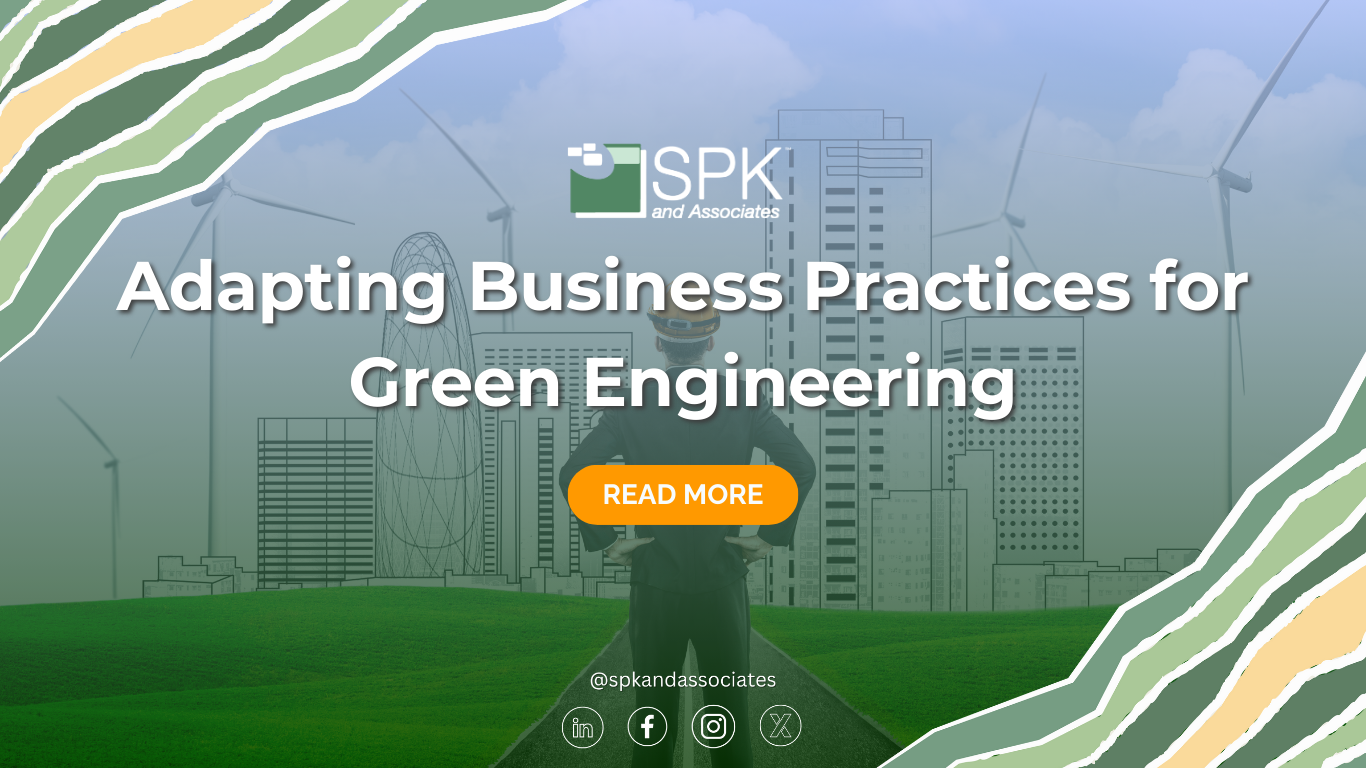As global temperatures rise, environmental regulations are becoming stricter in an attempt to prevent climate change from progressing. As a result of these regulations, businesses across industries are facing pressures to implement green engineering practices. Companies that fail to reduce their environmental footprint risk losing customers, market share, and competitive advantages. Leading manufacturers are addressing these challenges by integrating green engineering principles into their processes. By leveraging Product Lifecycle Management (PLM) systems and digital thread strategies, organizations can optimize sustainability throughout a product’s lifecycle. This includes recycling or reusing materials to prevent waste and aid in the creation of a circular economy. Let’s explore the critical challenges of green engineering and how businesses can adapt their practices to align with environmental goals.
What is Green Engineering?
Green engineering is the practice of making environmentally responsible design and manufacturing decisions throughout a product’s lifecycle. By leveraging PLM data, companies can evaluate their CO2 footprints and enable processes that reduce environmental harm. This not only ensures companies comply with regulations but improves client trust. Furthermore, incorporating sustainable practices reduces the consumption of energy and raw materials, aids in top- and bottom-line growth through recycling and reuse programs, and increases employee alignment with the company culture.
The Challenges Driving Green Engineering
There are a few main challenges leading to the increase of green engineering.
Reducing Environmental Footprints
The first challenge is reducing environmental footprints. Customers and stakeholders are demanding that companies minimize their environmental impact due to the climate crisis. Those who fail to adapt risk losing business to competitors who can demonstrate a stronger commitment to sustainability. Green engineering provides a roadmap for organizations to reduce carbon emissions, minimize energy consumption, and optimize resource usage.
Overcoming Linear Waste Systems
Traditional product lifecycles often result in products and materials ending up in landfills. This approach contributes to environmental harm while also preventing manufacturers from capitalizing on reuse and recycling opportunities. Green engineering promotes a circular economy that prioritizes the efficient use of resources. This not only saves organizations money but helps save the environment.
Disciplines of Green Engineering
Here are a few ways to incorporate green engineering into your workflows.
Design for Sustainability
Early design decisions, such as material selection, can significantly impact energy consumption, recyclability, and manufacturing waste. By designing products that are easy to assemble and disassemble, manufacturers can ensure components are reused or recycled efficiently at the end of their lifecycle. In addition to this, generative design can also help engineers evaluate sustainable materials and identify optimal combinations to meet sustainability goals.
Manufacturing Resource Optimization
Manufacturers often work with tens of thousands of parts, many of which require resource-intensive processes. Green engineering optimizes material usage to minimize production waste.
Closed-Loop Engineering
Closed-loop engineering provides a deeper understanding of a product’s full lifecycle impact through tools like digital twins. A digital twin is a virtual representation of a physical product that enables organizations to track materials through the lifecycle, identify reuse opportunities, and inform more sustainable design choices for future product iterations
PLM and Digital Thread for Sustainability
PLM systems, like PTC’s Windchill PLM, provide a single source of truth for all product data, enabling manufacturers to automate sustainable processes and optimize decision-making. Real-time product data improves accuracy and reduces errors, leading to fewer recalls and more sustainable products.
How PLM Capabilities Support Green Engineering
Concurrent Engineering
A well-implemented PLM allows for concurrent engineering. Concurrent engineering enables globally distributed teams to collaborate, reducing duplication and ensuring data accuracy for sustainable design processes.
Model-Based Systems Engineering (MBSE)
MBSE uses simulations to identify potential failures before physical products are built which reduces scrap and energy waste. It also helps optimize manufacturing processes for energy efficiency.
Supplier and Component Management
Organizations can partner with suppliers that share their sustainability goals. PLM solutions enable out-of-the-box processes for supplier collaboration, improving transparency and alignment.
Parts Classification
Duplicate parts drive unnecessary costs and material waste. Parts classification capabilities within a PLM solution help engineers find and reuse components, reducing scrap and optimizing resource usage.
Building a Sustainable Future with Green Engineering
Navigating climate change means implementing a new approach to product development. By embracing green engineering and leveraging PLM capabilities, manufacturers can reduce environmental footprints, minimize waste, and transition toward a circular economy. PTC’s approach to green engineering, powered by PLM and digital thread solutions, enables organizations to design, manufacture, and manage products with sustainability in mind. If you are interested in learning more about PTC, their PLM solution Windchill, or green engineering, contact our experts today.












